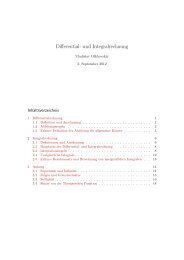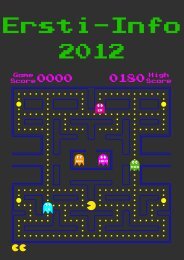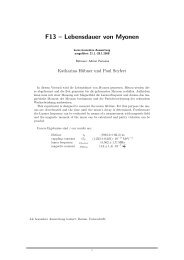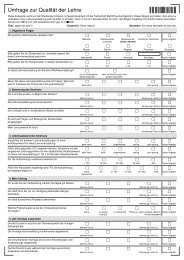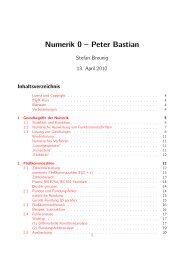Extrasolar Moons as Gravitational Microlenses Christine Liebig
Extrasolar Moons as Gravitational Microlenses Christine Liebig
Extrasolar Moons as Gravitational Microlenses Christine Liebig
You also want an ePaper? Increase the reach of your titles
YUMPU automatically turns print PDFs into web optimized ePapers that Google loves.
CHAPTER 3. METHOD 19<br />
by visualising the lensing system. Even more important is the fact that it carries<br />
the information about observable light curves. A light curve is obtained <strong>as</strong> a onedimensional<br />
cut through the magnification pattern. Only a few more <strong>as</strong>sumptions<br />
are necessary to simulate realistic, in principle observable, light curves – angular<br />
source size, relative motion of lens and source, lens m<strong>as</strong>s. Angular separations get<br />
a physical meaning once the distances to the source plane and to the lens plane are<br />
fixed.<br />
To get the magnification of a certain source, the brightness profile of the source is<br />
convolved with the magnification pattern. As a first approximation to the physical<br />
brightness profiles of stars (ignoring e.g. limb-darkening effects), we use a flat surface<br />
brightness profile. The extent of the profile is given by the radius of the source<br />
RSource.<br />
−∆mag<br />
3<br />
2<br />
1<br />
0<br />
Triple Lens Light Curve<br />
0 0.05 0.1 0.15 0.2 0.25 0.3<br />
t/tE<br />
Figure 3.2: The light curve resulting from the source trajectory shown in figure 3.1.<br />
The caustic-crossing close to the cusp shows up <strong>as</strong> a distinct planetary signature.<br />
The path of the source is described in map coordinates <strong>as</strong> a combination of a point<br />
and a directional step vector. For each light curve, the start and the end point are<br />
determined, while taking into account the size of the source by being limited to the<br />
area RSource away from the map boundaries. The light curve is sampled at equidistant<br />
intervals, the length of which is given <strong>as</strong> an input parameter in units of pixels.<br />
See also section 4.2.5 for physical implications of the sampling parameter. At each<br />
sampling point the brightness profile is convolved with the surrounding magnification<br />
values and an integration over all pixels up to RSource away is performed. This is the<br />
most computationally intensive operation in our light curve analysis programme,<br />
the computing time scaling with R 2 Source .



